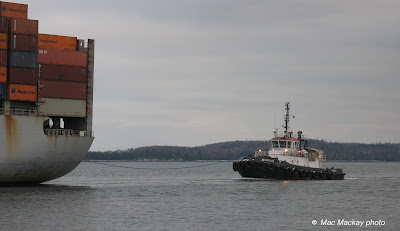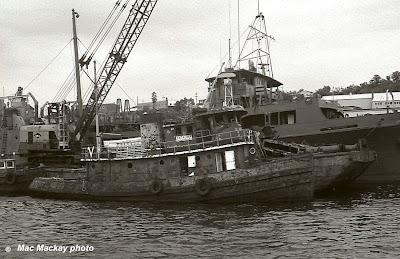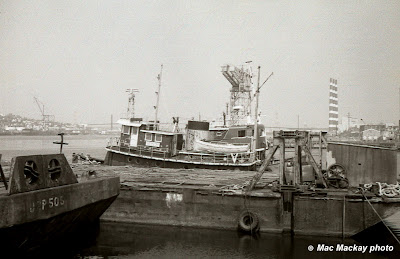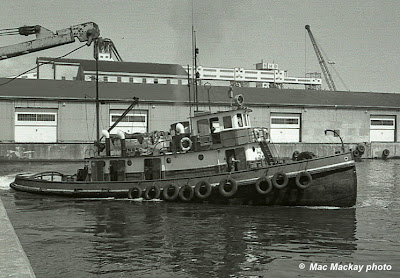
1.
Stevns Icecap at Halifax Shipyard 2008-05-28, dressed for its handover to Nordane. It completed its trials in Halifax under the supervision of Irving Shipbuilding.

2.
Alexis-Simard and
Grande Baie berthed at Port Alfred (now La Baie) in 1983.
Alexis-Simard was rebuilt following an explosion in 1990.
As expected, it has now been announced that Rio Tinto-Alcan Inc has purchased Stevns Icecap from Nordane Shipping of Denmark for service at La Baie, QC.
Built at East Isle Shipyard in 2006, the tug was delivered on its own bottom from Halifax after trials. Nordane had the tug out on charter to Svitzer as Svitzer Nanna from 2007, but it was returned and laid up last summer. A 5,000 bhp ice class, azimuthing stern drive tug, it is an exact sister to Fjord Saguenay (built as Stevns Iceflower , ex Svitzer Njord -07-09) purchased by Rio Tinto-Alcan in 2009 to replace Grande Baie, which sank at its berth earlier that year.
Stevns Icecap will be returned to Canada by heavy lift ship in February, and will no doubt be renamed.
It will replace Alexis-Simard, a Voith-Schneider tug, built by East Isle's predecessor, Georgetown Shipyards, in 1980. A fine tug of 3290 bhp it is slightly underpowered for the size of ships now using La Baie. An unusual feature of the tug is the aluminum deckhouse, used to promote the material manufactured by its owners. Most of the tug's work is berthing bulk carriers bringing in raw materials for the nearby aluminum smelter. Much larger ship are now used in this work and larger tugs are required, particularly in winter ice conditions.
Update Groupe Ocean has reportedly purchased
Alexis-Simard for use in their Ocean Ontario Towing operation, based in Hamilton. It will replace
Escorte.
.
























